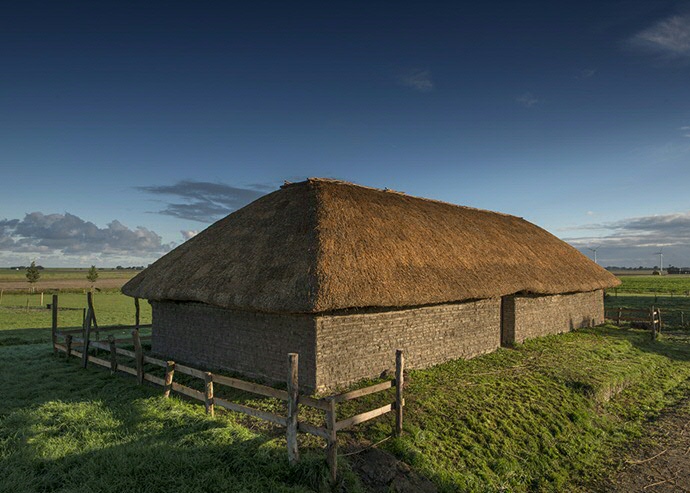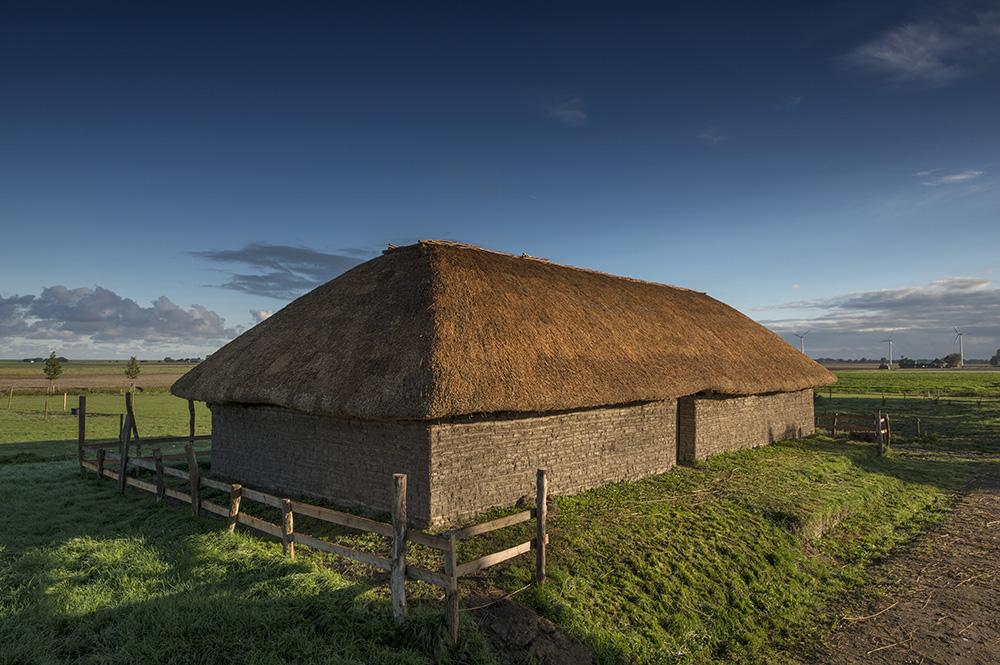Reconstruction of early medieval turf house open

The reconstruction of an early medieval turf house in Firdgum is now open to the public. The turf house was officially opened on Friday by Deputy Kramer of the Province of Friesland. This remarkable archaeological reconstruction was coordinated by the University of Groningen Terp Centre. The project is part of the PhD research carried out by Daniël Postma on building traditions in coastal areas of the Northern Netherlands. On Friday Postma also presented his book, ‘Het zodenhuis van Firdgum – Middeleeuwse boerderijbouw in het Friese kustgebied tussen 400 en 1300’ (The Turf House of Firdgum – Medieval Farmhouse Construction in Frisian Coastal Areas, 400-1300. In this book, Postma reports in detail on the design and construction process of the turf house and presents an entirely original perspective on the architectural development of the Northern Netherlands farmhouse.
The reconstructed turf farm replaces the farmhouse that partially collapsed in 2013 following a roof leak. Thanks to the renewed efforts of many volunteers, the reconstruction of the turf house could begin in 2014. The last roofing work was completed in October. Thestable, which is nearly 17 metres long, is characterized by a 1 metre-thick carrier wall made of layered turf, as was customary throughout the region from the fifth to the early eighth century. It is also the first archaeological reconstruction with an arch-shaped roof construction, which clearly distinguishes it from the rectangular trusses of existing historic farmhouses.
More information
- Visiting the turf house: Yeb Hettinga Museum
- The archaeological study: Daniël Postma

The turf house forms part of the archaeological support centre of the Yeb Hettinga Museum in Firdgum and can be visited during the Museum’s opening hours. The richly illustrated turf house book is written in a highly accessible style. It can be purchased from the museum shop in Firdgum and will soon be available from bookstores and through Barkhuis Publishing. The book also offers recommendations for the study of future archaeological settlements and suggests that new building experiments might benefit from a focus on archaeologically inspired forms of sustainable construction. In the coming months Postma will be reworking his study into an academic thesis.
More news
-
18 November 2025
What about the wife beater? How language reinforces harmful ideas
-
03 November 2025
Menopause in perspective: How the media influences our perception
-
23 October 2025
Nine UG researchers awarded Vidi grant
